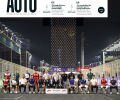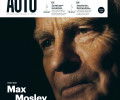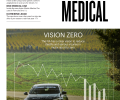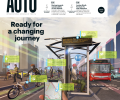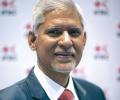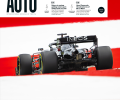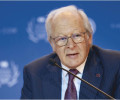AUTO #31 - Constructing a new normal
For FIA Disability And Accessibility Commission President Nathalie McGloin her own experience of life-changing events has helped her deal with the effects of the coronavirus pandemic. And she believes that in times of volatility, uncertainty, complexity and ambiguity, the only solution is to rebuild – one brick at a time
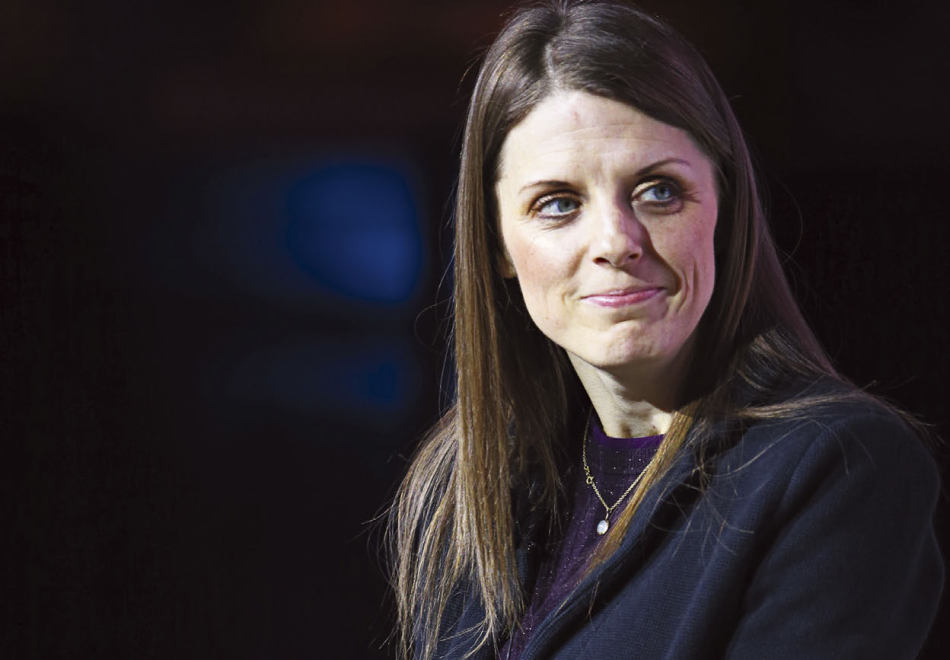
“It doesn’t have to be any worse, it just has to be different…” These are words I speak to newly- injured patients after suffering a spinal cord injury. Having had a spinal injury myself at the age of 16, I speak with authority on this. Breaking your neck is arguably one of the most devastating physical disabilities that can happen to a person and, if you are unlucky enough to become one of the 500,000 people this happens to each year, the adjustment to living with paralysis can be a lengthy process. It’s life-changing in a way that few people can ever imagine.
During my time in lockdown, I’ve been reading a lot from different organisations about how they are coping with COVID-19 and what their plans are to bounce back and adapt to that ‘new normal’ everyone is talking about. One that resonated with me personally was a quote by Jim Loree, President and CEO of Stanley Black and Decker, when he referenced the acronym ‘VUCA’. VUCA is a military term used to describe periods of volatility, uncertainty, complexity and ambiguity.
After breaking my neck, I went into my own lockdown for a period of 11 months, experiencing ‘VUCA’ on an intensively personal level during my spinal rehab in hospital. Although that situation was completely different to what we are experiencing today, I can find numerous parallels. The skills and resources I have gained from that period are not only what have led me to achieve some incredible things in life, but are also what I will personally draw upon for my own bounce back from this global pandemic.
When I was first injured, my whole world completely fell apart. Sustaining a spinal cord injury is a bit like demolishing a house, it’s like a wrecking ball comes through, knocks down every wall of the house that is your life and leaves only the foundations in place. Foundations are usually pretty strong but when they are covered in the rubble of your collapsed house, that strength can be pretty hard to uncover. But what I discovered is that the more people help you move the rubble, the faster those foundations can be exposed.
However, at 16 years of age I had no wisdom or life experience to know that ultimately I would be okay and consequently my outlook was extremely bleak. Before my accident, I was a confident young adult starting to make plans for my future. I was a high achiever at school, loved after-school theatre classes, and spending time with my friends. I had a part-time job while I was studying for my A-Levels and was starting to think about university choices. Life was great and I was so independent. In a moment, that was all taken away from me when a car crash left me completely paralysed from the chest down with limited hand function.
BUILDING BLOCKS
As I slowly came off the morphine in ITU and started to learn about the permanence of paralysis, it also exposed some unexpected and unwelcome realities that I would have to learn to live with. Not only would I never walk again, but my hands would never regain any function grip and the hardest thing to come to terms with was that I would never again have voluntary control over my bladder and bowels. There was so much to take in and deal with, I just didn’t know where to begin. The bricks of my house that were on the floor were all misshapen, they didn’t fit together like they used to, and I had no idea how to piece them back together. There were way too many of them to move by myself, so I couldn’t see the foundations and the strength that I so desperately needed to find that I started to think they had been broken too.
That’s when one of the nurses stepped in to help and showed me another house that had been put back together. This house didn’t look like my old house but it looked like a good house and, although I couldn’t see the foundations, I knew they were strong. An ex-patient, Alan Smith, had the same level of injury as me and offered the first small glimmer of hope that I might be okay. He came into the spinal unit and talked to me about the sports he played, the car he drove and showed me how he lived independently. That nurse knew I needed some hope, some proof that life outside the spinal unit could get back to some semblance of normality. Alan was a symbol of that hope and was my inspiration to work together with my NHS family, who helped to uncover the strength in my foundations and towards discovering my new normal.
Spinal rehab was tough while I was learning to deal with having to do things differently. However, it was a safe environment. In there we were all the same, everyone knew about all the issues that go with having a SCI (Spinal Cord Injury) and no one was different.
Spending any time in lockdown is not fun whatever the reason, but for me, I’d become so institutionalised that I was afraid to leave. I knew that being back in the big wide world meant my life would be different to that of others, but more importantly different to my old life that I was still mourning and still desperate to have back. I was anxious to get back to normality and do what I was doing before my accident, but when the first day back at school came around I was scared. What if was all just too much and I couldn’t cope?
In the spinal unit, I’d managed to find my strength, the foundations of my house. But the walls weren’t yet fully rebuilt, they were only a few courses of bricks high. I didn’t have any confidence that the walls wouldn’t fall down again if any force was placed upon them. The morning of my first day back at school, I broke down in tears and said to my mum: “What if I can’t do this?” She simply replied: “If you can’t do this then you can come back home and we will figure something else out.” I stopped crying, wiped my face and went to school. It was the bravest thing I have ever done in my life.
When I broke my neck I made a promise to myself. I promised that I would not let my injury stop me from doing whatever I wanted to do in life. I kept my promise and 16 years later I became the first woman with a spinal cord injury to compete in a licenced car race against able- bodied men.
Given the choice I would always choose to be able-bodied. However, I will always be grateful for the opportunities that have opened up to me because of my injury, as I’m certain that I would not be racing cars had I not been in that accident. If you can find a silver lining in situations such as these then, in my opinion, you’ve already won half the battle.
However, battles can’t be won by one person. If it hadn’t been for the support of the NHS, my family and the people who believed in me then I wouldn’t be where I am today. Often, we don’t just have one battle to fight in our lifetimes either, and that’s where our allies play such an important role in our success. After fighting to earn my right as a respected racing driver for four years, in 2017 a car crash on a race circuit almost saw me give up the sport that I loved for good. If it wasn’t for the support of my motor sport family, I don’t know whether I would still be pursuing my passion. Self-belief is so important, but when it’s dented by emotions that are out of your control, you need someone else to have your back. Having friends, family and supporters believe in me and my vision gave me the motivation to carry on fighting.
Today, my fight is not only for my own ability to follow my dreams, but to give others the same opportunities that I had when starting out in motor sport. In 2016, with my partner Andrew Bayliss, I co-founded Spinal Track, a charity that gives disabled drivers the opportunity to do what I love: driving adapted cars around race circuits.
Our charity doesn’t just provide driving experiences, it gives disabled people and their families the belief that anything is possible. After sitting on the pitwall watching tears of happiness roll down a father’s face as he saw his disabled son driving a racing car around Silverstone circuit for the first time, I honestly believe that motor sport has the power to heal.
Alongside my charity work, I also have the privilege of ensuring that motor sport remains accessible and safe for disabled drivers in my role as the FIA Disability and Accessibility Commission President. I was given so much support and opportunity in my own ‘bounce back’ journey that it’s motivated a passion for me to help others in my position. I believe that privilege should never be taken for granted and I will never feel entitled to it. It’s now my turn to give back.
When I was in lockdown in spinal rehab, I saw no future for myself. During my time at university and even today, I’m petrified of failure. What I have learned through my different stages of recovering from my injury and building a career for myself as a disabled person is that failure isn’t a weakness, it’s a tool to make us stronger.
The more we fall down, the more we learn how to get up bigger, better and stronger for the next challenge. What I’ve also learnt is that in times of great volatility, uncertainty, complexity and ambiguity, when we are supported by others who also have the drive to never give up, we can not only survive, we can thrive. Our new normal coming out of this pandemic doesn’t have to be any worse; it just has to be different.

 Facebook
Facebook Twitter
Twitter